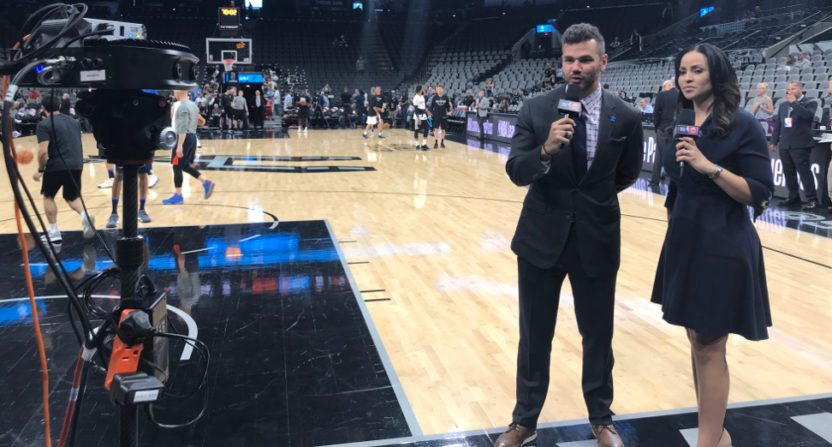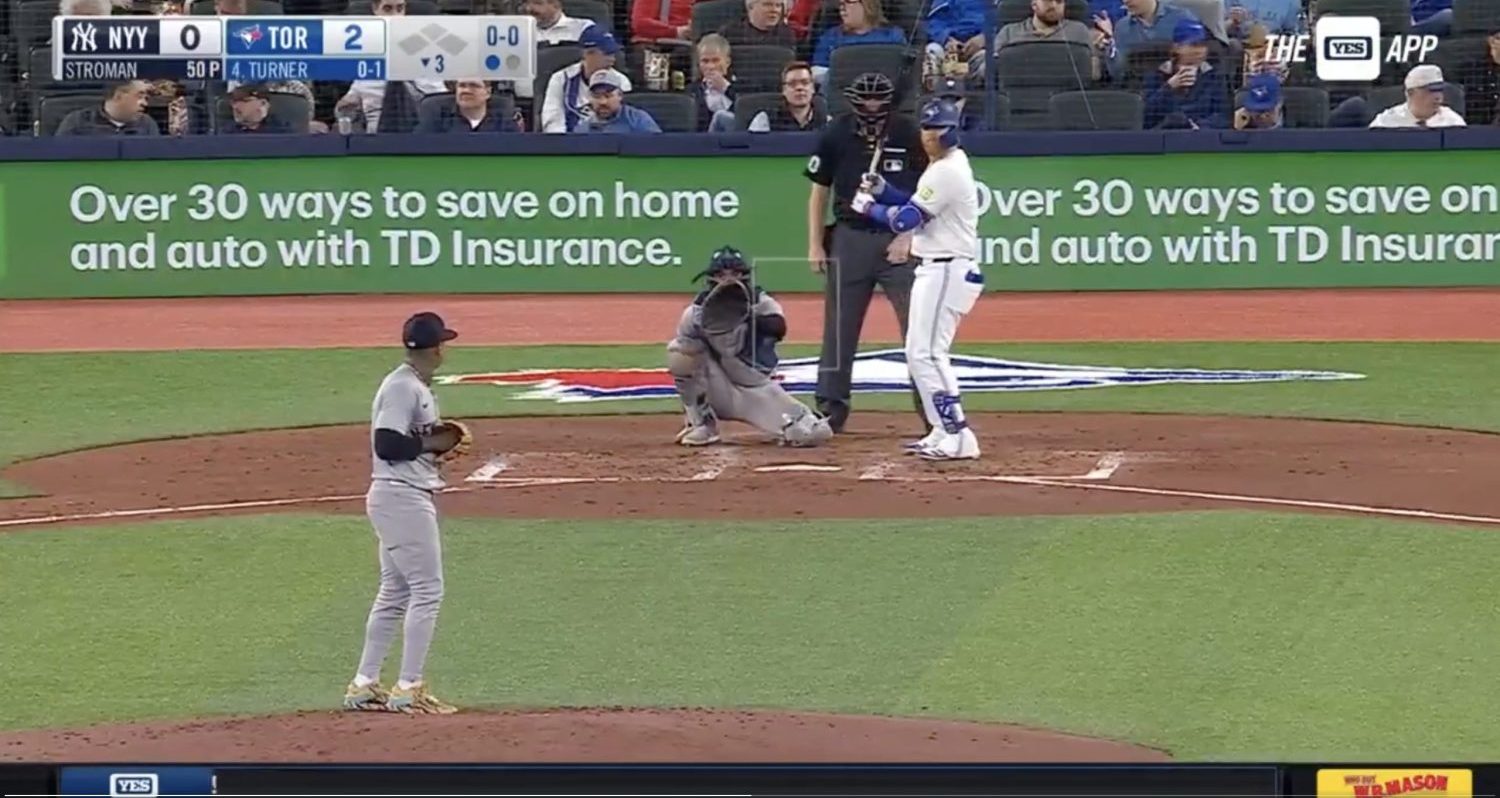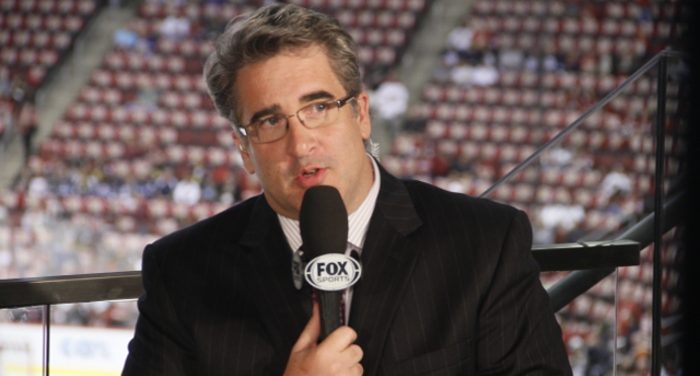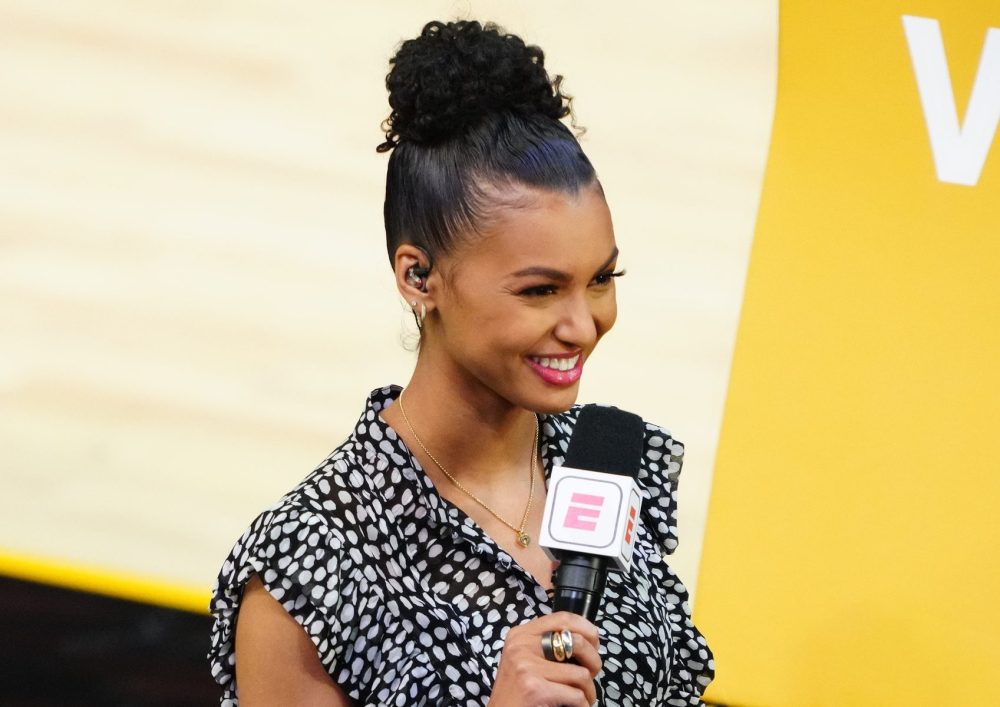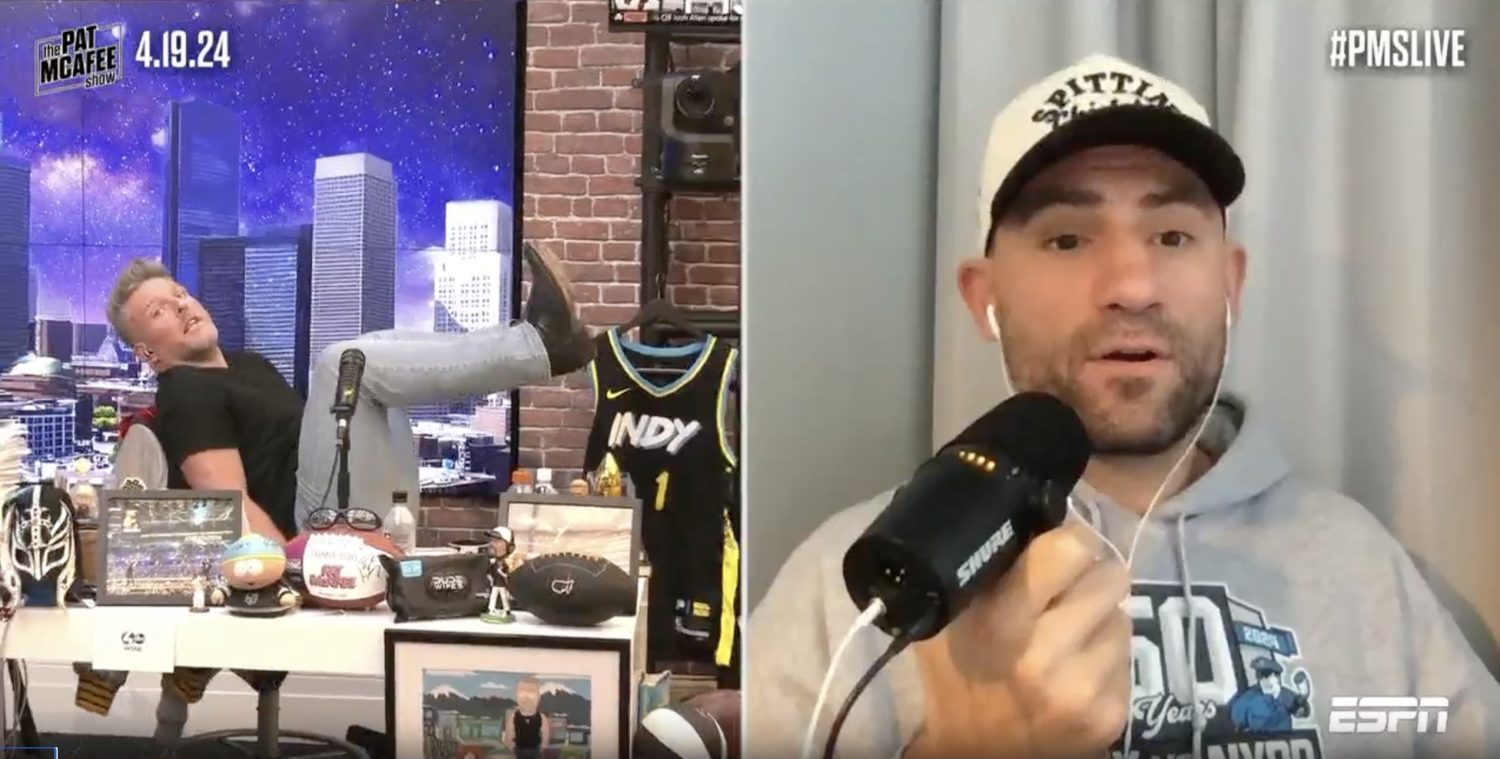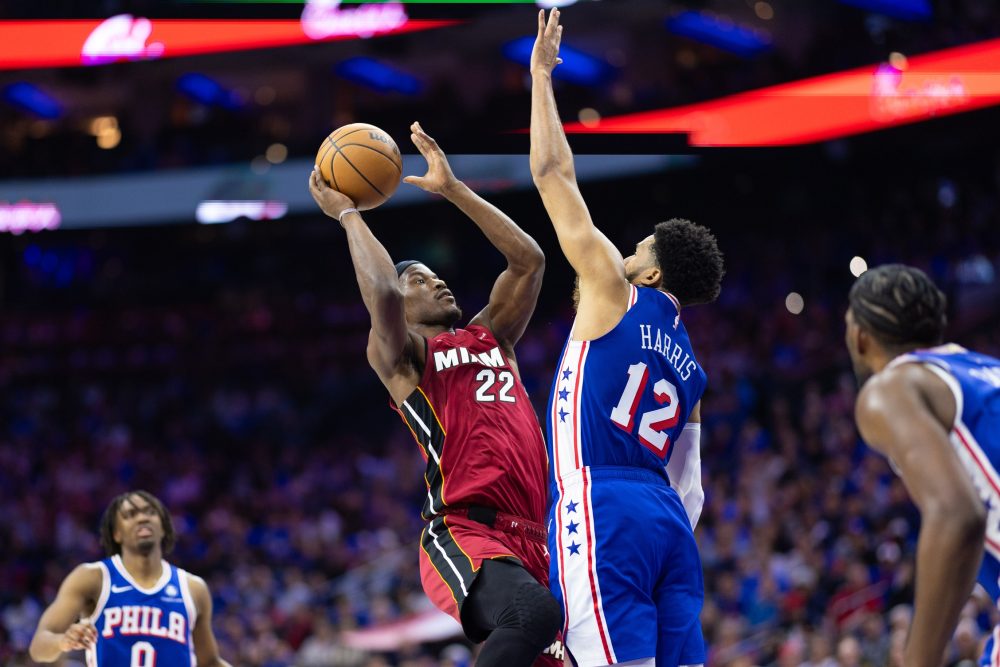We’ve seen virtual reality broadcasts become more and more common across sports in recent years, and that’s continuing with the NBA playoffs, but in interesting fashion. Turner and Intel have partnered to broadcast select playoff games in VR, including Sunday’s Game 4 between the Cavs and Pacers (8:30 p.m. ET) and their feeds not only have their own cameras, directors and producers, but their own announcers, including Spero Dedes and Stephanie Ready. Dedes and Nadia Banks (the strategic business development manager for Intel Sports) both spoke to Awful Announcing this week about the NBA on TNT VR broadcasts, with Dedes saying calling games in VR has been an interesting adjustment, one that shifts part of his job into directing viewers to the most notable things happening on the different camera angles available.
“The preparation for the games, everything that happens before and after is the same,” he said. “The difference is the mechanics during the game. Up until now, we’ve actually been calling the games from a little sound booth in the production truck…now, in the playoffs, it’s actually in the arena at a broadcast position, which is great. But the difference is it’s such a visual thing and dependent on what angles fans are watching, meaning we kind of don’t know what they’re looking at. And instead of me looking at the floor, I’m looking at the monitor, where we have multiple camera angles.”
“Replays are a little different, how the game is cut, but what I’ve found is the biggest difference is because [viewers] have nine or ten camera angles that they can choose from, and because this technology is still so new for so many people, I’m finding myself basically being a traffic cop, you know, telling them where to look. Not necessarily at the action, ‘Hey, if you look to your right, one of the officials is talking to the coach and he’s having an animated conversation. If you look to your left, you know, player X is getting his knee worked on at the bench.’ So you’re kind of directing them where to look and what camera angle to go to. And to be honest, every game there’s been something new that’s come up that we haven’t encountered before, so it’s been really cool to A. experience something new like this and then B. see the technology, which is off the charts.”
As Dedes mentioned, those playoff games have seen the announcers shift from the production truck to an in-arena broadcast position. He said that helps them relay the energy of the building to the viewing audience.
“Any announcer wants to be in the arena, you want to feel the energy of the crowd, and we want to convey that to the viewers, so I think it’s a huge, huge help for us.”
He said the truck setup worked well in its own right, though, and it gave the announcers the chance to work even more closely with the producer and director.
“There were advantages to being in the truck too. We were in close proximity with the producer and the director, we were able to just kind of walk over at halftime and regroup, and doing that in-person in-game for the first time was advantageous, I found.”
Dedes has been doing various VR broadcasts for over a year now, but said while he’s gotten over the initial learning curve, there are still new things that come up. And that’s exciting for him.
“It took a little bit of an adjustment at the beginning, but since I’ve now done this for a little bit…I did this for the first time last year, at the Sweet 16 of the NCAA Tournament, once I got done with my regular stuff for CBS. That was my first experience, and it definitely took us, I would say, a couple of games to get comfortable with everything that we were seeing in front of us. At this point, we have a pretty good feel for how the games are being cut by the director, kind of where to look, so it’s helping, we’re way more comfortable than we were at this point last year. But it’s still new, it’s still fresh, and we’re still learning as we go. And that’s made it even more fun.”
Banks said Intel has learned a lot from the different sports they’ve broadcast in VR, and basketball’s been particularly interesting for them because of the arena setup.
“We just came out of a huge one with the Olympics, which we broadcast all around the world with different rightsholding broadcasters in each country. We did MLB games last year under the Intel TrueVR brand; the rest of our experiences are really more with our partners. We’ve done the NFL, the PGA Tour is actually one we’ve done quite a few events on, and we’ve gotten to not just experiment with traditional headset experiences, but we’ll stream it to Twitter and also through a mobile experience. But basketball has been just a lot of fun. Basketball is a great experience for virtual reality because it’s a closed court, you can put cameras all around it, and you can just capture different angles, ones you would never get even if you were watching it on TV or you paid for courtside seats, because we’ve got cameras under the stanchions, and nobody gets to hang from the basket and watch the game and have somebody dunk on you.”
Speaking of that, here’s a look at the stanchion cam for a Karl-Anthony Towns dunk in a Timberwolves-Warriors game earlier this year, and then a glimpse of the courtside cam afterwards:
Banks said last year’s MLB game of the week broadcasts were key in helping them figure out what worked well with the new technology.
“One of the big platforms where Intel learned a lot around VR was with Major League Baseball, because we did a game of the week all summer, and each game we got to play with new production tools and add new elements. We started adding talent, things like that. So it gave us this platform where the guys on the ground just got to be creative and test whatever they wanted, and not everything always works, right? But you see what does and what doesn’t, and we took a lot of those learnings and applied them to basketball. An example would be the integration of 2D content; our experience isn’t just the 3D content that we’re capturing with our cameras, we’ll put a picture-in-picture up, and we’ll throw any kind of 2D content in, whether it’s showing our announcers…we’ve had Spero calling the game, and we’re showing him in the little box while free throws are being shot, or we’re putting together little packages, we’ll even take TNT’s programming, like, if they’ve got a better replay than we do, we’ll pull that up in a picture-in-picture and show it. So elements like that, we learned a lot with baseball.”
Banks said sports VR is a key space for Intel, and one that fits in with what they’re trying to do in other areas.
“At Intel, we officially created a sports group about 18 months ago, and really, the goal is around the whole transformation and digitization of industry. Sports is going through one of those right now, there’s so many new enhancements that can help enhance experience. And one of those things that Intel wants to do is really help fans get more immersed into the game and help our partners deliver an immersive experience to fans and let them interact with sports in ways that they never have before.”
The latest
“If a partner just wants us to use their feed, we can and will, but what’s cool about having your own announcers, like with Spero and Stephanie who have been our primary announcers, they get to call the game based on how the cameras are calling it. It’s not like the broadcast, traditional, you get to actually go in and say ‘Hey, check this out,’ even guide them in how to use the different cameras, say ‘Don’t forget you can check out different camera angles on your own, but come back to us if you want to see X,Y,Z.’ So it makes you feel like you’re watching the game with Spero instead of him just talking to everyone. It’s like you’re sitting there watching the game with him.”
Banks said the NBA broadcasts usually involve two production trucks and a five-camera setup.
“We actually have two 53-footers or trucks, we’ve got broadcasting equipment in there, and we’ve also got our unique proprietary equipment that helps us turn this into a VR stream,” Banks said. “We’ve been pretty consistent with each game where we do a five-camera show. We’ve got what we call Camera 1 or suite-camera, suite-level, that’s our traditional high game camera, like you’re sitting in the suites, getting to watch the game. And then we’ll put a camera on the announcers’ table, which we call our courtside camera. Then we’ve got the left basket and the right basket, and then our fifth one is what we call a rover. We don’t actually get to rove with it, the NBA’s not comfortable with that yet, but we use it to film our pregame, our postgame, and then we’ll put it in a cool spot and capture fans, things like that with it. And, except for that last one, we make our cameras selectable, so as a viewer, you can pick whichever camera you want to watch the game from, or you can watch the VR cast, which is us producing, directing and cutting the whole game for you.”
Dedes said those different cameras provide extra information for the announcers, too.
“Our favorite is definitely the VR cast. It’s the camera that’s right at center court on the floor, and you have an incredible vantage point, 180 degrees, both benches,” he said. “It’s almost as if you’re sitting in that seat at center court. You can see the coaches, see the action, and you can see it all in one continuous shot. …We have a camera position over each basket, just hanging right on the stanchion, and that camera angle has been really fascinating to watch because you can see spacing, you can see depth perception, so you see plays break down differently than if you’re watching on linear TV. Steve Smith, who I worked on VR casts with at the Sweet 16, Elite Eight and Final Four, that was his favorite angle because he could see the spacing on the floor and he was able to break plays down differently, more in-depth than he was if he was calling the game on regular television. Every one of the angles brings something new.”
He said it’s been a great experience calling these games in VR, and he thinks VR broadcasts will be a bigger and bigger part of sports down the road.
“This is cool, because we’ve done so many games and you do it in the same way all the time, this is kind of refreshing and forces you to think about things differently, to look at things a little bit differently. So this is really fun, it’s been really interesting, and I think it’s something that could become really prominent in the next couple years if it continues to go the way it is.”
Dedes said the goal of VR broadcasts is to try and present an in-arena experience to fans at home, and one with even better seats and more viewing options.
“The really cool part of this, I think, is that of NBA fans, a very small percentage get to actually experience games in person, very few buy the tickets and have an opportunity to go to the game. This, I think the goal that Intel has in mind, and all these people that are putting so many resources into VR, the goal is that this can maybe replace the in-arena experience. Instead of paying all that money for a ticket, parking, the hassles of getting there, you can go buy one of these headsets…and hopefully I’m sure the price will come down at some point, like with any new technology. When HDTVs came out, they were super pricey, but then the prices came down.”
“But, no matter where you are…you can be in New York and be like ‘I want to go to the Warriors’ game tonight,’ and you throw that headset on, and literally you transport yourself into the arena. And I think eventually the NBA’s going to want to do this internationally too. You can be in China and be like ‘I want to go to the Garden tonight.’ You put that headset on, and it’s not like you’re watching the game through a lens like you would be on TV. It’s literally like you’re in the arena and looking at the game, peeking through a window, actually watching players in front of you. It’s wild.”

